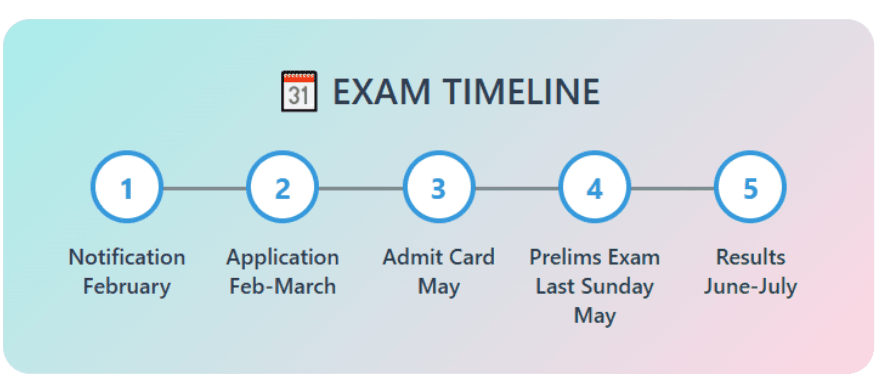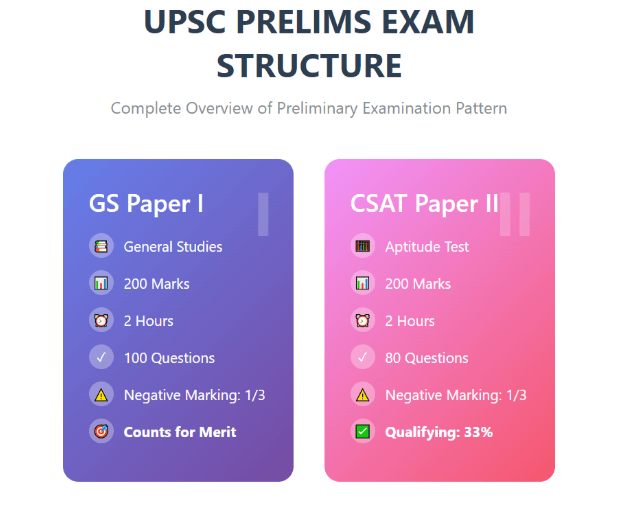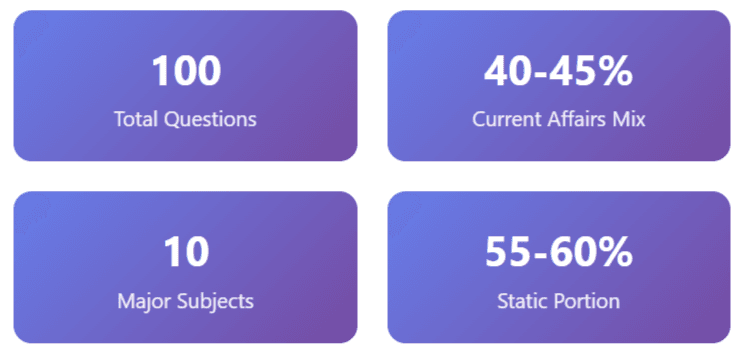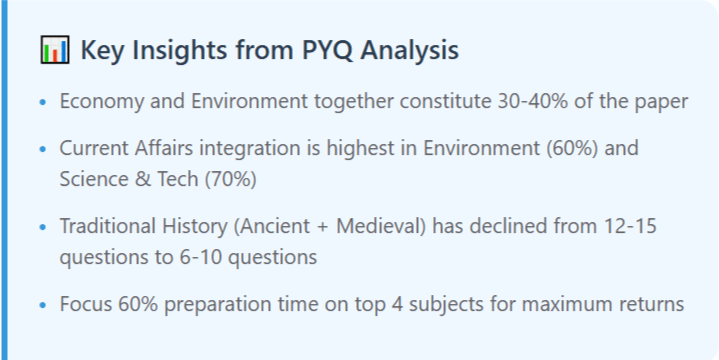UPSC Prelims Syllabus Simplified Subject Wise
27 min read
Nov 01, 2025

Prelims = two papers of 200 marks each. GS counts for the merit cut-off; CSAT is qualifying. The official syllabus is brief, so beginners misread scope. Use a subject-wise map and PYQ cues to set priorities, integrate current affairs with static, and do integrated Prelims and Mains preparation.
Why This UPSC Prelims Syllabus Guide?
The UPSC Civil Services Examination has 3 stages - Prelims, Mains, and Interview.
While the Mains syllabus is detailed and well-defined, the UPSC Prelims syllabus is vague. Due to this students are not able to completely understand the syllabus of Prelims and are not able to make an effective study plan for it.
Understanding the Prelims Examination syllabus in terms of subjects ensures that we identify their weightage in Prelims and make an integrated plan for Prelims and Mains preparation using subject level blocks.

UPSC Prelims at a Glance
- Two Papers: Paper I (GS) for merit cut-off; Paper II (CSAT) qualifying.
- Marks & Format: 200 marks each; objective MCQs.
- Goal: Clear GS cut-off + score above CSAT qualifying mark.

Prelims Syllabus as per Official UPSC Notification
Below is the syllabus mentioned in the official notification of UPSC every year for civil services examination for the Prelims Stage.
Prelims GS Paper I Syllabus - General Studies Syllabus
- Current Events of National and International Importance.
- History of India and Indian National Movement.
- Indian and World Geography-Physical, Social, Economic Geography of India and the World.
- Indian Polity and Governance-Constitution, Political System, Panchayati Raj, Public Policy, Rights Issues, etc.
- Economic and Social Development-Sustainable Development, Poverty, Inclusion, Demographics, Social Sector Initiatives, etc.
- General issues on Environmental ecology, Bio-diversity and Climate Change - that do not require subject specialization.
- General Science.
Prelims GS Paper II - CSAT Syllabus
- Comprehension; Interpersonal Skills including Communication Skills.
- Logical Reasoning and Analytical Ability.
- Decision Making and Problem Solving.
- General Mental Ability.
- Basic Numeracy (Numbers and their Relations, Orders of Magnitude, etc.) (Class X level).
- Data Interpretation (charts, graphs, tables, data sufficiency etc. — Class X level).
The CSAT syllabus is fairly well defined. However, this paper should not be taken lightly as it has a high level of difficulty. Many students fail in Prelims as they ignore this paper and are unable to secure qualifying marks in this paper despite clearing the General Studies paper cut off.
Therefore it is advised that sufficient time is given on a weekly basis to practice CSAT questions to ensure that you are able to get more than qualifying marks. The focus should be on practising PYQs particularly easy pattern questions from the CSAT syllabus to easily qualify this paper.
UPSC Prelims General Studies Syllabus Analysis
- General Science → Science & Technology: Despite the term “General Science,” questions largely test applications & principles in IT, biotechnology, nanotechnology, space, not basic Physics/Chemistry/Biology concepts.
- Economy → Macroeconomics heavy: PYQs repeatedly hit monetary policy, inflation, external sector, banking/indices, fiscal basics—even if not spelled out under “Economic & Social Development.”
- History isn’t one block: Treat it as Ancient, Medieval, Art & Culture, Modern/Indian National Movement. PYQs distribute across these buckets with year-to-year variation.
- Current Affairs is subject-anchored: Map news to a GS line—Environmental treaties, climate bodies; Polity institutions & judgments; Economy data/indices—instead of chasing headlines.
- Polity specifics recur: Parliament, constitutional bodies, federal features, fundamental rights/duties show up often, though the notification uses broad wording.
Effective Way to Organize UPSC Prelims Syllabus 2026
To make an effective study plan for Prelims students need to read and understand the General Studies syllabus in terms of major Subjects. One should also focus on static and current affairs components based on PYQ analysis.
Based on detailed analysis of UPSC Prelims syllabus trends over the last decade, here's the actual weightage:


How to use UPSC Prelims Syllabus for Study Planning

Students can use the above subjectwise division of Prelims Syllabus to plan their studies for UPSC Prelims 2026.
- Prioritise the subjects for Prelims based on weightage given above to focus your effort on high yielding subjects.
- Subject wise classification for Prelims Syllabus above can help integrate with UPSC Mains GS Paper 1,2 and 3 subject wise and do integrated Prelims & Mains Preparation.
- You can also cover multiple resources like NCERTs, Standard Books, Coaching Notes, current affairs etc subject wise for more consolidated and comprehensive subject level preparation.
- Plan and track your mock tests and revisions focussing on high priority weak areas using the subject wise syllabus table above as a subject level tracker.
Overall the subject wise approach to UPSC Prelims syllabus helps you plan and manage your preparation effectively for both Prelims and Mains in an integrated manner.
Mastering the UPSC Prelims syllabus requires strategic planning. Use this subject-wise breakdown to optimize your preparation. In coming blogs we will cover each subject in detail and at topicwise level for both Prelims and Mains.
FAQs: UPSC Prelims Syllabus (Subject-wise, Simplified)
1) What are the two papers in UPSC Prelims?
Paper I: General Studies (GS) for merit cut-off. Paper II: CSAT (Aptitude) is qualifying.
2) Does CSAT count for the cut-off?
No. CSAT is qualifying; GS Paper I alone decides the cut-off.
3) What skills does CSAT test?
Comprehension, interpersonal/communication skills, logical reasoning, analytical ability, decision making, general mental ability, basic numeracy, and data interpretation (Class X level).
4) Is CSAT easy enough to ignore?
No. Difficulty is high; many fail due to neglect. Practice weekly, prioritising PYQs and standard pattern questions to stay comfortably above qualifying marks.
5) Why is a subject-wise view of the Prelims syllabus necessary?
The official notification is brief. A subject-wise map clarifies scope, reveals weightage, and helps integrate Prelims with Mains planning.
6) How should I use PYQs with the subject-wise map?
Use PYQs to identify recurring concepts and depth per subject, then set priorities and allocate time accordingly.
7) What are the major GS subjects I should plan around?
Polity & Governance, Economy, History (Ancient, Medieval, Art & Culture, Modern History), Geography, Environment, Science & Technology, plus Current Affairs–driven Miscellaneous.